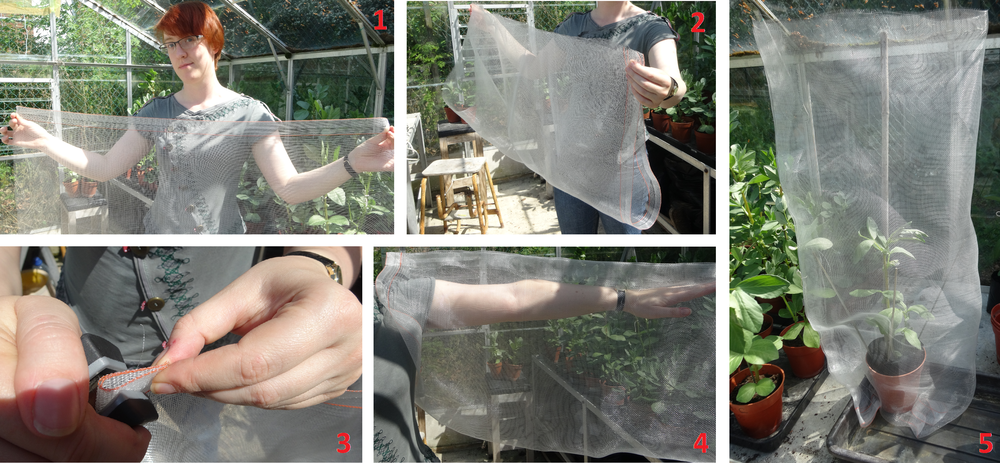Our beans are starting to flower now, and many of yours have also started around the country – so we are now into the experimental stage! We have added another page to the FAQ for this stage as well.
Lots of you have already assigned your treatments to the beans (and here has been an email about how to go about that), but to repeat it here for posterity / reminders:
Assigning treatments
To make sure that the results of the experiment are as accurate as we can get, the experimental plants need to be assigned to their treatments randomly. This might not seem much for only three plants, but there are over 500 volunteers in the experiment, so when we get to looking at ALL of your data together, the need to randomise is actually really important.
So for choosing your beans, could you please:
1) Pick three plants that are the most similar to each other (number of stems, height, etc) from the ones you have. There might not be much choice if you only have four, but give it a go!
2) Arrange these plants in a row where they are to be kept in your garden (or slightly staggered row, watering trays permitting), with at least a 10cm gap between them.
3) Number these plants, 1 – 3 and make sure you know which one is which.
4) Pick which plant to net up using a random number generator (such as: http://www.random.org/integers/?num=1&min=1&max=3&col=1&base=10&format=html&rnd=new <- which should be set for 1 -3, use the suggested plant), or a dice (e.g. if the dice rolls 1 or 4, use plant 1; 2 or 5 use plant 2; 3 or 6, use plant 3).
5) Pick the hand-pollination plant, again using a random method to choose between the remaining plants (even a coin flip will do here).
Spare plants or pollen plants should be kept further away (1 metre or more) from the experimental ones, if possible. If you need to keep them closer, please randomise where they go too; if they are further away it doesn’t matter how they are arranged.
Note – if your beans are already fixed in place (if you buried them in their pots, for example), then this should still apply. Note – if you have already assigned your treatments and put the netting on, don’t worry! This effect is important over the whole experiment, so as long as people who haven’t netted up yet can do this, we will be fine.
Randomising is really important, to make sure that results are able to show what is really happening as closely as they can. It’s much easier to do it during the experiment than it is to try and compensate afterwards for not doing it.
Important points
The important points for this stage are:
• Assigning treatments to beans at random.
• Making sure that the netting is secure, and either tucked under or tied onto the pot, to keep pollinators out.
• Your plants are clearly labelled to prevent mix-ups.
• You have recorded the date that your beans began flowering on your recording sheet, so we will know when your experiment started.
Netting up
Some photos below of Linda setting up the netting for our exclusion plant. We used staples to close the tube, at the sides and at the top, but anything that works is fine (it is not closed in the last picture, but we did then staple it!)
